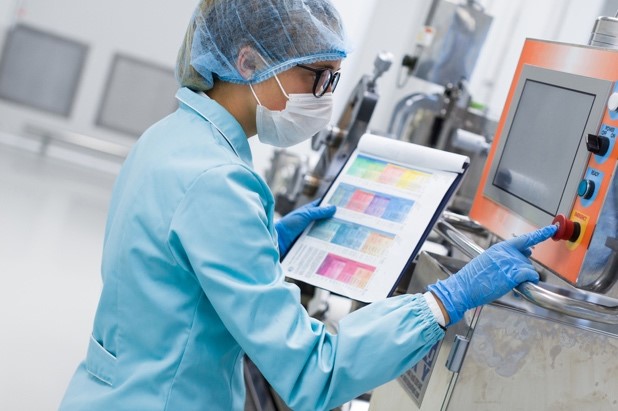How Will Banning Antibiotic Growth Promoters Affect Food Safety?
By Suzanne Osborne
The 1950s, marked by relative wealth for post-war Americans and Europeans, saw an explosion in the demand for meat. When it was discovered that inclusion of antibiotics in animal feed improved weight gain and feed efficiency, farmers jumped at the economic opportunity. Now, 70 years later, nearly 15,000 tonnes of antibiotics are sold for animal consumption in the United States: 5 five times more than is sold for human use. The majority are used as antibiotic growth promoters (AGPs) in feed.
But there is a catch: the use of antibiotics, especially at the low doses found in animal feed, has contributed to the emergence of antibiotic-resistant bacteria. Doctors now struggle to treat human infections that were easily cured a generation ago, establishing a new element of food safety risk for consumers. Health officials, desperate to maintain the efficacy of antibiotics, view AGPs as a wasteful use of these “miracle drugs.” They favour a global ban on AGPs. They argue that the resulting operational changes will actually improve long-term productivity, increase consumer confidence, and open new export markets.
Health officials, desperate to maintain the efficacy of antibiotics, view AGPs as a wasteful use of these “miracle drugs.”
Not to mention reduce the risk to human health from antibiotic resistance.
Should We Ban AGPs?
To many in the food animal industry, banning AGPs seems like a disaster. They see higher animal mortality and morbidity (especially in young animals), fewer animals born per litter, increased variability in their product (animal size is specified in mechanical processing), an increased time to market, increased veterinary costs, and an increase in wholesale prices. The bottom line: it will cost more.
So whose opinion should hold sway?
When AGPs first hit the market they increased animal growth by upwards of 15%, although their benefits were never as strong in cleaner, less stressful facilities, or those with more mature animals. A limited number of recent studies suggest the effects of AGPs are waning. Withdrawing AGPs from several chicken and hog operations saw, at most, a 1% loss of productivity. Productivity levels have also remained consistent in the European Union since their ban on AGPs in 2000. Even the World Health Organization has computationally modelled that a global ban would only cause a 1% increase in productivity costs. A 15% decrease in productivity would be crippling to the food industry, but retaining the use of AGPs over a 1% effect seems ludicrous.
But why have AGPs stopped working?
Antibiotic Resistance Has Become Pervasive
One possibility is that improvements in industry hygiene and biosafety practices, and the corresponding improvements in animal health, have diminished the need for AGPs. It is also possible that antibiotic resistance has become so pervasive that AGPs no longer have any effect.
Although a global ban on AGPs in the interest of food safety for consumers is probably inevitable, steps must be taken to safeguard producers. Those with high hygiene and care standards in place will not feel the effect of an AGP ban as strongly. For those in need of facility and operational upgrades, the costs could be financially devastating. This could necessitate government-sponsored financial incentives for operational upgrades and supporting research into AGP alternatives. Some producers have already turned to non-antibiotic feed additives for growth enhancement including probiotics, prebiotics, antimicrobial peptides, polyphenols, and natural extracts. Caution is advised here: we know very little about how growth promotion is achieved and even less about alternatives. For example, it was recently shown that AGPs decrease the levels of the energy harvesting molecule BSH (bile salt hydrolase) in the animal gut. Yet many probiotics can indirectly add BSH back into the animal, suggesting they may increase the need for AGPs, not replace them.
Despite industry fear, a global ban on AGPs is necessary to safeguard antibiotics and limit the risk to consumer health that our meat supply currently presents. The end of the antibiotic era is not a futuristic science fiction story: it is already upon us. Failure to protect these miracle drugs may mean paying for our food with human life.
About the Author
Dr. Suzanne Osborne‘s expertise is in the field of host-pathogen interactions and foodborne bacteria. She obtained her doctoral degree at McMaster University and worked as a Research Fellow at the Hospital for Sick Children (Toronto). She has received numerous awards for her research. Suzanne currently does freelance science writing and grant writing.

-
 FeaturedRisk management
The Cost of a Breach: What a Cyberattack Could Mean for Food Safety Recalls
FeaturedRisk management
The Cost of a Breach: What a Cyberattack Could Mean for Food Safety Recalls
-
 FeaturedRisk management
Securing the Food Chain: How ISO/IEC 27001 Strengthens Cybersecurity
FeaturedRisk management
Securing the Food Chain: How ISO/IEC 27001 Strengthens Cybersecurity
-
 FeaturedRisk management
Revolutionizing Food Safety Training: Breaking Out of the “Check-the-Box” Mentality
FeaturedRisk management
Revolutionizing Food Safety Training: Breaking Out of the “Check-the-Box” Mentality
-
 GFSI Standards
GFSI 2025: Building Trust, Tech-Forward Solutions, and Global Unity in Food Safety
GFSI Standards
GFSI 2025: Building Trust, Tech-Forward Solutions, and Global Unity in Food Safety
-
 FeaturedFood Safety
Integrated Pest Management: Strategies to Protect Your Brand’s Reputation
FeaturedFood Safety
Integrated Pest Management: Strategies to Protect Your Brand’s Reputation
-
 FeaturedFood Safety Culture & Training
No Open Door Policy: Challenges That Impact Pest Control in Food Processing Plants
FeaturedFood Safety Culture & Training
No Open Door Policy: Challenges That Impact Pest Control in Food Processing Plants




